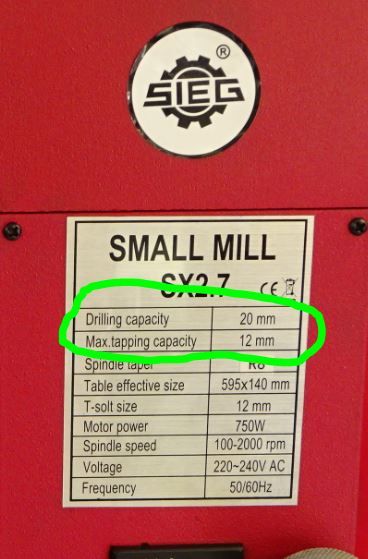Do the purveyors of these machines point this out to prospective purchasers? NO, THEY DON’T! There is inter-company competition to attract the buyers with as much cheap hype as possible, this being just one facet.
Nobody(?) runs their machine at highest speed, at the chuck, all the time – unless the spindle speed is lacking (mine is only 1750 which is ‘slow’ and plain bearing machines are even slower). Carbide tooling is not best served at low speed, of course.
Not a lot different to band saws, which might appear to have twice the power, but are really no better than the ones which actually provide half the output power.
Little different to the compressors which, to some, appear to be far more efficient (by quoting ‘air displacement instead of the far more useful ‘free air delivery).
Unsuspecting punters are often being hoodwinked into buying machines that are not quite what they think they are.
There is one well recommended seller (by forum members) that does not, at least, over-hype their machine power by over-rating the drives. There are likely quite a few that do.
Years ago, small stationary engines from one manufacturer were rated differently to competitors. They eventually had to reduce their ratings because they got so much flak from dissatisfied owners – that their engines were ‘gutless’ – and their reputation suffered as a result (they reported ‘flash’ output, not a continuous output).
This is likely why ‘old iron’ is often better than buying new. OK if the buyer is aware and able to make fair comparisons. Not so good for the new starters, with no basic knowledge of this advertising hype. Mechanical wear is another problem for the ‘non-mechanicals’, of course.
Just ask any myford owner how many motors the machine has gone through in its lifetime of 50, 60 or 70 years.🙂
I’m still awaiting any reply on whether the figure quoted for this machine is actually to the motor or usable power out – or even power to the lathe, not necessarily to the motor, even. My current lathe has had a motor change (guessing simply from single phase to three phase) and my previous was likely still on its original (the direction change-over switch was a three phase type and certainly more than thirty years old when I bought it) and the instruction manual did warn about reduced motor life if started on a high speed setting, instead of reducing the speed before switching off. My first lathe only had its original motor (although its position was not ideal re magnetic swarf collection🙂 .
.
Old is not always good, but is almost certainly more reliable.😉
Nick Webb 1.



 .
.


